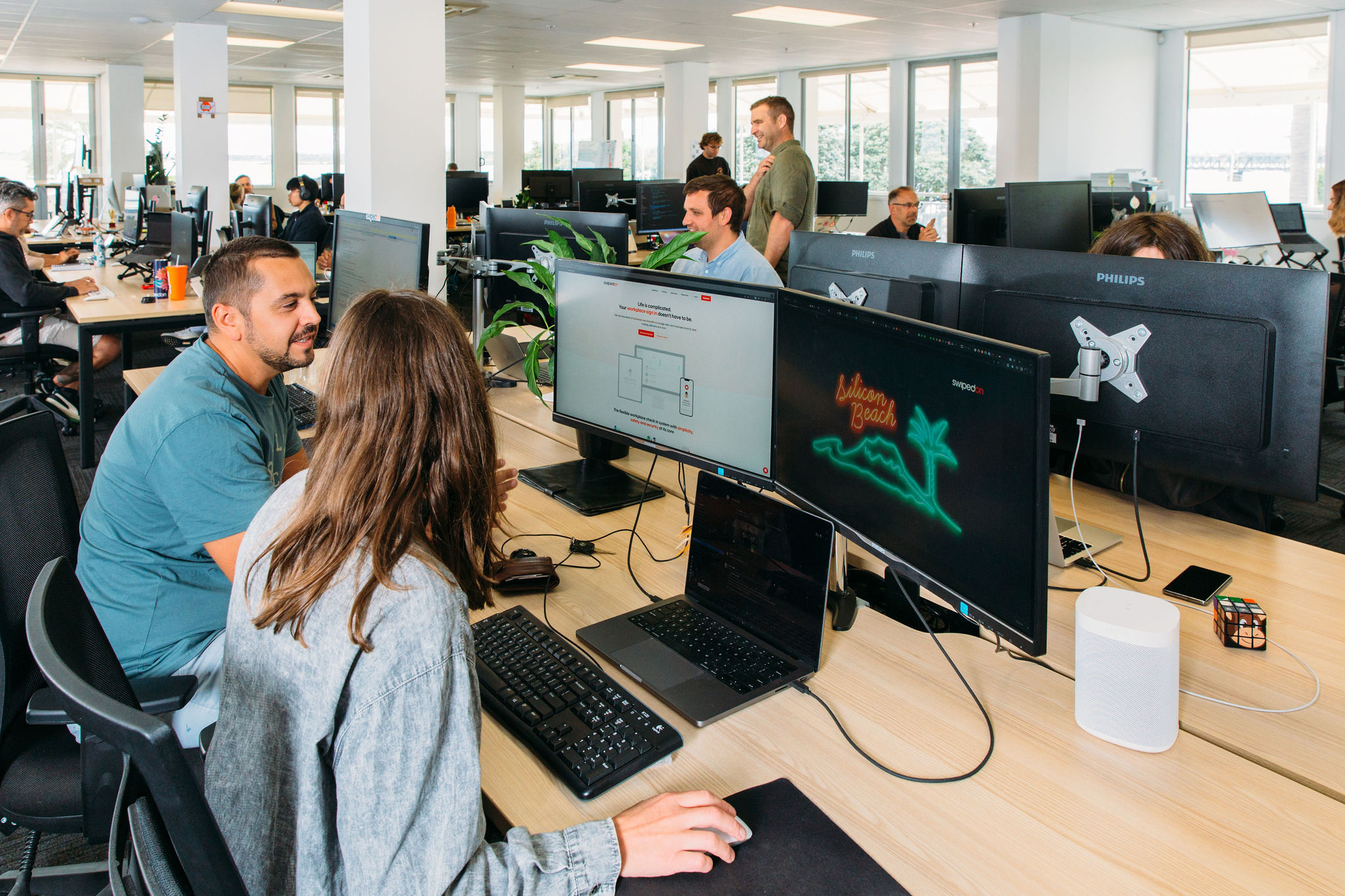The Return-to-Office Blueprint: How to Build a Thriving Workplace

Despite employee preferences, there is a growing trend among business leaders to transition their staff from remote and hybrid work setups to traditional in-office arrangements. The likes of Amazon, Disney, and JPMorgan are leading the charge, recognizing the potential for heightened productivity and collaboration that comes with face-to-face interactions. However, this return-to-office transition can pose challenges and create unexpected issues.
So, how do companies ensure a smooth return to the office? In this guide, we’ll share valuable insights and strategies for a smooth return-to-office plan, ensuring effective staff management and a safer work environment. By following these guidelines, businesses can successfully transition back to the office while prioritizing the well-being and productivity of their employees.
Things To Consider While Creating a Return-to-Office Strategy
Here are some important things to consider when creating a return-to-office strategy:
Assess Workplace Readiness
Before initiating the return to the office, it is crucial to assess the readiness of the workplace. Evaluate the physical infrastructure, ventilation systems, and hygiene protocols to ensure compliance with health and safety guidelines. Consider social distancing, workstation placement, and sanitizing stations to create a safe environment.
Define Safety Protocols
Establish clear safety protocols that align with local health regulations. Develop guidelines for wearing masks, maintaining personal hygiene, and sanitizing workspaces. Communicate these protocols effectively to employees and encourage adherence to ensure a secure work environment for everyone.
Address Employee Concerns
Recognize that employees may have concerns and anxieties about returning to the office. Foster open communication channels to address their questions and provide support. Conduct employee surveys or feedback sessions to gauge their readiness and respond to any concerns.
Implement Effective Communication
Effective communication plays a crucial role in managing the return to the office. Keep employees informed about transition plans, safety measures, and any updates or changes in protocols. Utilize various communication channels such as emails, virtual meetings, intranet portals, and bulletin boards to ensure everyone is informed and engaged.
Challenges of Executing a Back-to-Office Strategy
There can be some obstacles when transitioning employees back to the office from fully remote or hybrid positions. For example, remote work may still be preferred, and many have gotten used to being away from the physical office. Here are some other challenges you might face:
Managing Employee Expectations
Employees may have different expectations and preferences when it comes to returning to the office. Some may be eager to resume in-person interactions, while others may prefer a hybrid or remote work arrangement. It is essential to establish clear guidelines and expectations, ensuring fairness and addressing individual needs as much as possible.
Addressing Resistance
Some employees may resist returning to the office for various reasons, such as health concerns or lifestyle adjustments. To address resistance, foster a culture of empathy and understanding. Provide opportunities for open dialogue, address concerns, and consider flexible work arrangements that accommodate individual needs while maintaining productivity.
Supporting Mental Well-Being
The pandemic has taken a toll on mental health, and returning to the office can trigger additional stress and anxiety. Prioritize employee well-being by offering resources such as counseling services and mental health awareness programs and by promoting work-life balance. Encourage managers to have regular check-ins with their teams to provide support and monitor employee morale.
Benefits of Creating Phased Return-to-Office Plans
Regardless of the industry or company size, a return to the office has too many benefits to ignore. Here are a few that make the transition worthwhile:
Easier to Assess Effectiveness
For many business leaders, the shift to remote and hybrid work environments was something they had never experienced. As such, understanding the impact and effectiveness of these arrangements is challenging. A phased return to work allows leaders to assess productivity and other metrics in comparison to in-office results, allowing them to adjust accordingly.
Address Individual Needs More Effectively
Every employee's situation is unique, and a phased approach enables leaders to consider individual needs. Some employees may require accommodations due to health conditions, caregiving responsibilities, or transportation challenges. By offering flexibility and customized arrangements, businesses can support their employees and maintain a positive work environment.
Maintain and Improve Productivity
Phased returns help balance the need for in-person collaboration with remote work arrangements. This hybrid model can enhance productivity by leveraging the advantages of both remote and in-office work. Employees can benefit from focused work time at home and the opportunity for collaboration and team building when in the office.
Manage Capacity
A phased return to the office allows for better capacity management and reduces overcrowding risk. By gradually bringing back employees in cohorts or staggered schedules, organizations can ensure physical distancing and compliance with occupancy limits.
Help Your Staff Embrace the Return-to-Office Transition Through Technology
Regardless of the challenges, creating a culture and environment that facilitates the return can help employees adapt quickly. Here are a few ways technology can help to do that:
Utilize a Visitor Management System
Implement robust visitor management and touchless check-in systems. These improve safety and security, minimize physical contact, and allow for efficient tracking of employee attendance.
Implement Desk Booking Software
Utilize desk booking software to offer employees a flexible work environment. These systems can improve morale and provide increased productivity and collaboration.
Digital Communication Tools
Leverage digital communication tools such as instant messaging platforms, project management software, and video conferencing. These technologies facilitate seamless collaboration and communication, regardless of whether employees are in the office or working remotely.
The TLDR
A return-to-office plan requires a well-designed and executed plan that prioritizes employee well-being, productivity, and safety. By considering the factors outlined above and embracing technological solutions, business leaders can navigate the back-to-office transition.








 Germany - Deutsch
Germany - Deutsch